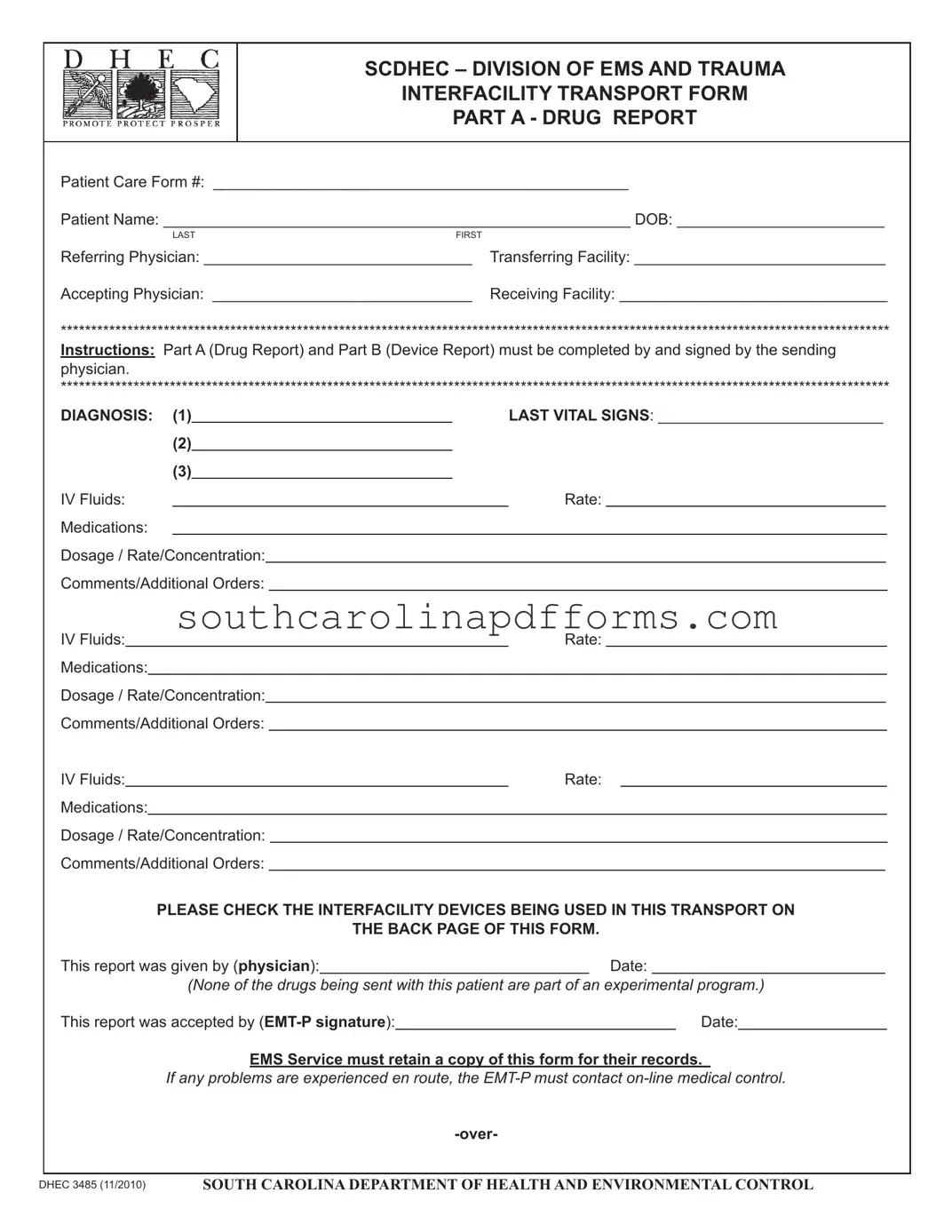The DHEC 3485 form is a crucial document used in the interfacility transport of patients requiring specialized medical care. This form is divided into two primary sections: Part A, which focuses on the drug report, and Part B, dedicated to the device report. Each section must be meticulously completed and signed by the sending physician to ensure accurate and safe transfer of the patient. Part A captures vital information such as the patient’s name, date of birth, and the referring and accepting physicians, along with a detailed account of the medications administered, including dosages and rates. It also includes a section for last vital signs and any additional orders that may be necessary during transport. On the other hand, Part B lists various invasive or implanted devices that may be utilized during the transfer, such as arterial lines, central venous catheters, and chest tubes. Both parts of the form play a vital role in facilitating effective communication between medical facilities, ensuring that the receiving team is fully informed of the patient's condition and needs. Accurate completion of the DHEC 3485 form not only aids in patient safety but also complies with regulatory requirements, making it an essential tool in emergency medical services.
